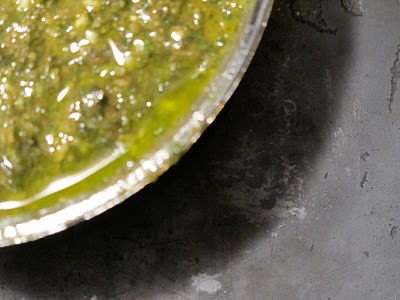
But I can.
My brother can.
Infact we both ate three islands apiece.

And then some.
Floating islands are sadly, not part of America's Cultural Makeup. They are not often on restaurant menus. They are not particularily easy to make or transport. They are not particularly well known outside of their home country (France).

This is all excruciatingly sad, because eating a Floating Island ranks on my list of things you must do if you want to drastically improve your quality of life.

What is a floating island?
It's whipped meringue, formed into a sort of vague ovoid shape, that sits in a puddle of the most luscious, rich, sweet creamy custard. And then caramel is drizzled over all this bliss.

What makes this dessert so special is the remarkable play of textures in your mouth, the sticky crunchy caramel, the smooth tounge coating cream and the fluff of whipped egg white.

This is a good dessert to make with someone else. The recipe isn't difficult, but because of all the different elements, it's a nice idea to do it with some one else, for maximum efficiency/relaxation. My wonderful brother Michael was my co-pilot on this one. He made the meringue islands (and took the pictures).
He was very proud of himself.
And then we ate them all.
Every single island.
Floating Islands
from The Perfect Finish by Bill Yosses
Spiced Creme Anglaise:
2 cups whole milk
1 teaspoon green cardamom pods, lightly crushed
2 whole star anise
5 large egg yolks, at room temperature
5 tablespoons suar
pinch of slat
Caramel Sauce:
1/3 cup granulated sugar
Floating Islands (Iles Flottantes):
1 cup milk, for poaching liquid
4 egg whites, at room temperature
1/4 teaspoon cream of tartar
1 cup confectioners' sugar, plus additional for sprinkling
1 pint whole raspberries or sliced strawberries, for serving
For the Creme Anglaise:
1. In a saucepan over medium heat combine the milk, cardamom pods and star anise, and bring to a simmer. Simmer for 2 minutes, then turn off the heat and let the spices infuse for 5 minutes.
2. Bring an inch of water to a simmer in the base of a double boiler (or in a saucepan over whick you will be able to suspend a metal bowl).
3. In the top bowl of the double boiler (or metal bowl), whisk the egg yolks with the sugar and salt. REturn the milk mixture to a simmer and strain it through a fine-mesh sieve into the yolks, while whisking constantly (discard the whole spices). Attach a candy thermometer to the side of the double boiler (or metal bowl). Transfer this custard to the top of the double boiler (or the bowl) and cook, stirring constantly, until it thickens and coats the back of a wooden spoon (at 160 to 170 F), 3 to 5 minutes. Trasfer to a bowl and let cool to room temperature.
For the Caramel Sauce:
Have ready 1/4 cup hot water. Pour the sugar into a heavy saucepan and add 2 tablespoons cold water. Cook over high heat, stirring, until the sugar dissolves. Let the mixture bubble, swirling the pan occasionally if it colors unevenly, until it form a dark amber caramel (at about 374 F), about 10 minutes. Take the pan off the heat and carefully whisk the hot water into the caramel (it may sputter). Return the pan to the heat and stir until smooth. Set aside, covered.
For the Floating Islands:
1. In a saucepan over medium heat, prepare the poaching liquid: Combine the milk with 1 cup water and bring to a simmer, then turn off the heat.
2. In the bowl of an electriv mixer fitted with the whisk attachment, beat the whites with the cream of tartar on medium speed until foamy, about 8 minutes. Gradually add the sifted confectioners' sugar. When all the sugar has been added, raise the speed to high, and beat until the meringue forms firm, glossy peaks, about 8 more minutes, which will give the meringue the strength it needs.
3. Fill a glass with very hot tap water. Dip two serving spoons into the water, then scoop an egg-size about of meringue into one of the wet spoons. Rotate the "egg" of meringue, transferring it from soppon to spoon, to get a smooth, ovoid shape, then slide it oto the lined baking sheet. Repeat with the rest of the meringue (you should have twelve "islands"). Note: We ended up with 15.
4. Position a rack in the center of the oven and preheat to 350 F. Line a rimmed 11-by-17-inch baking sheet with parchment paper or a nonstick liner.
5. Bring the milk-and-eater mixture back to a simmer and pour it into the 9-by-13-inch baking pan. Use a wet spatula to transfer the meringue "eggs" to the pan. Sift 2 or 3 tablespoons of confectioner's sugar over the tops of the meringues. Bake on the center rack until set, about 10 minutes. Use the spatula to transfer the meringues to a parchment-lined baking sheet once they are cooked. Allow the meringues to cool to room temperature. They last for 2 hours uncovered, no longer.
To Serve:
Ladle in 1/3 cup of the creme anglaise onto each of six shallow, wide bowls. Place two meringues on top of each pool, drizzle them with caramel sauce, and scatter with raspberries or strawberries.










